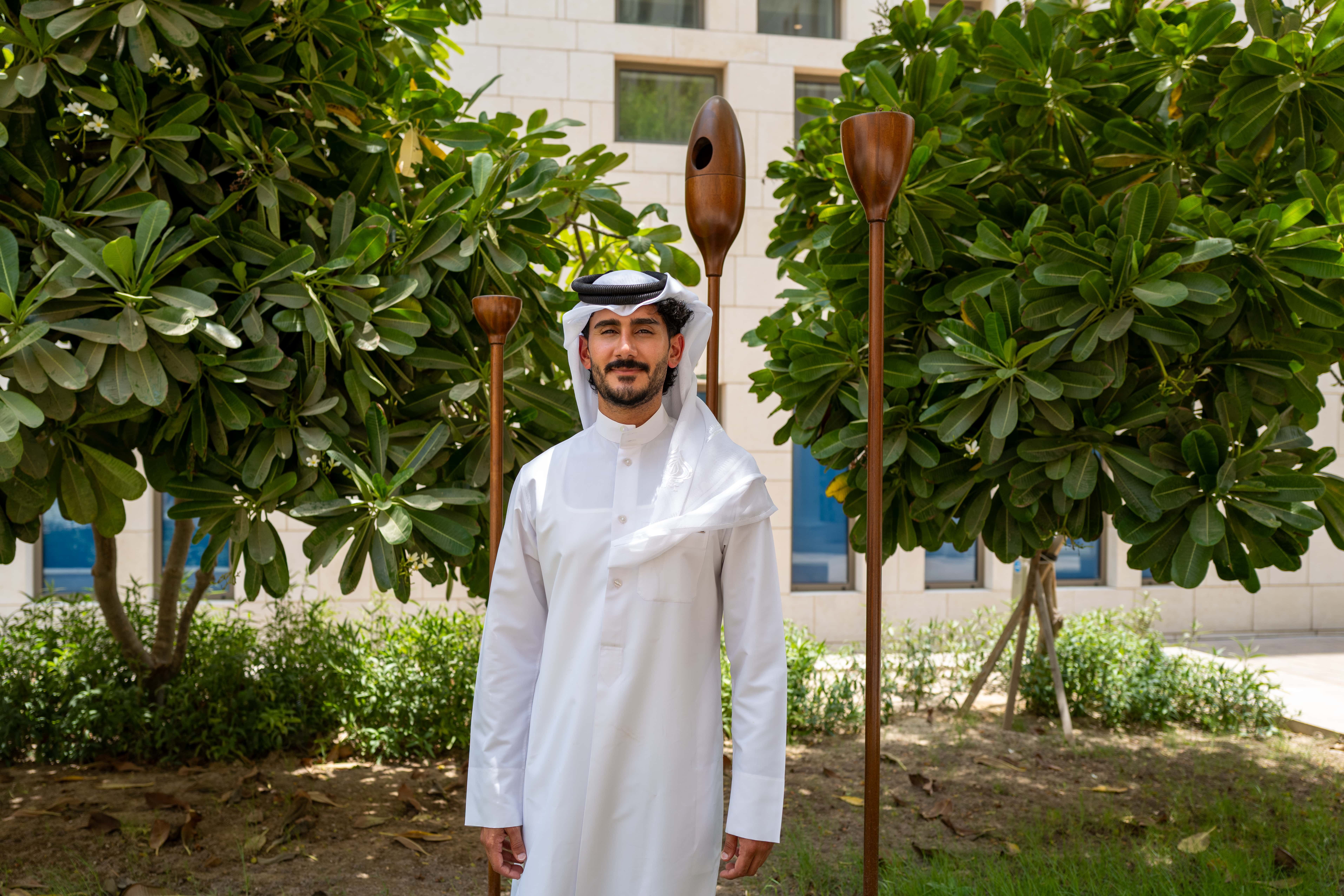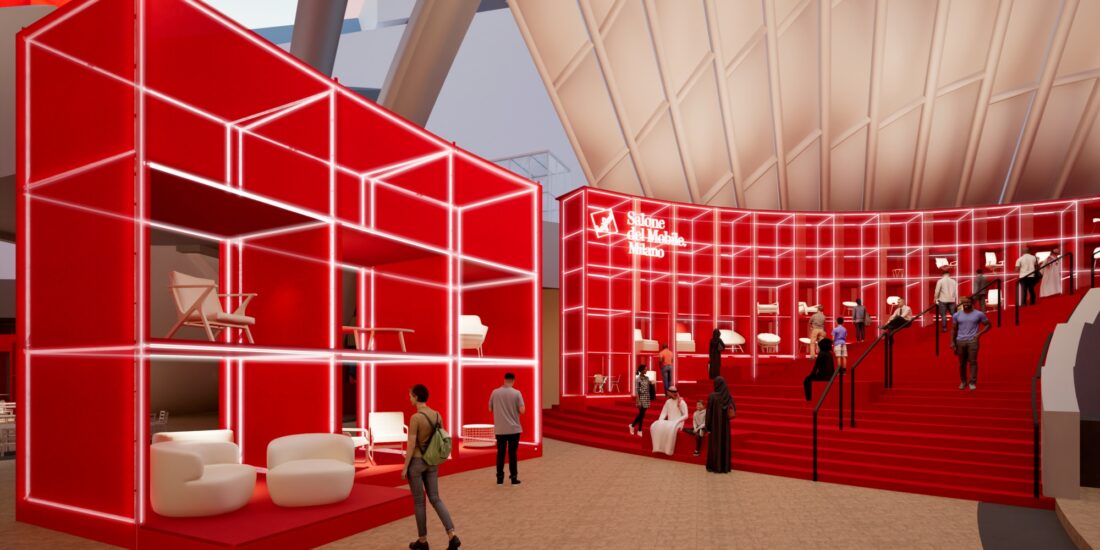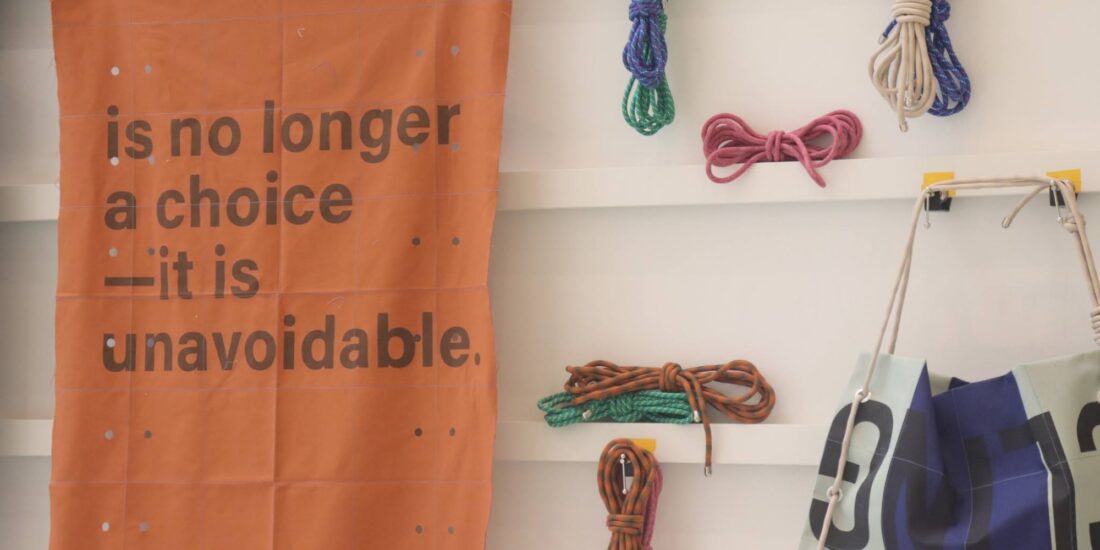Abdelrahman Al Muftah’s Design Brings Biodiversity to Msheireb
In the city’s most carefully planned quarter, a design gesture invites life with wings. Among the overhangs and shaded walkways of Msheireb, Qatari designer, VCUarts Qatar MFA graduate, Abdelrahman Al Muftah has built a sanctuary, not for people, but for the Bulbul birds that have always belonged there.
 In the heart of Msheireb, amidst the planned precision of Qatar’s reimagined downtown, The Bird Cluster sits quietly. Designed by Qatari artist and designer Abdelrahman Al Muftah, this small-scale public artwork merges sculpture, architecture, and ecology.
In the heart of Msheireb, amidst the planned precision of Qatar’s reimagined downtown, The Bird Cluster sits quietly. Designed by Qatari artist and designer Abdelrahman Al Muftah, this small-scale public artwork merges sculpture, architecture, and ecology.
Commissioned through a collaboration between Doha Design District (DDD) and VCUarts Qatar, the work reflects Qatar’s Vision 2030 ambitions for sustainability. By encouraging collaboration and empowering emerging designers, this project exemplifies how DDD and VCUarts Qatar are cultivating local talent to create impactful solutions that benefit the community.
 Inspired by traditional Qatari architecture, the design seamlessly integrates into the urban landscape while providing functional nesting spaces for smaller birds. The compact yet secure structure features entry points specifically designed to exclude larger invasive species, ensuring a haven for Qatar’s native Bulbul birds. This attention to detail highlights the project’s dual focus on preserving biodiversity and maintaining harmony with the environment.
Inspired by traditional Qatari architecture, the design seamlessly integrates into the urban landscape while providing functional nesting spaces for smaller birds. The compact yet secure structure features entry points specifically designed to exclude larger invasive species, ensuring a haven for Qatar’s native Bulbul birds. This attention to detail highlights the project’s dual focus on preserving biodiversity and maintaining harmony with the environment.
“Thoughtful design goes beyond aesthetics, it’s about understanding the broader environmental impact of what we create,” says Abdelrahman. “Every decision ripples outward, affecting entire ecosystems.”
The Bird Cluster: Materiality and Research
 The Bird Cluster is a layered object: planter, feeding tray, watering station, and nesting chamber. Every element is proportioned to welcome the Bulbul while gently excluding larger, invasive species. Its geometric rhythm borrows from vernacular architecture, yet its function looks forward, imagining a city that makes room for other species in its planning.
The Bird Cluster is a layered object: planter, feeding tray, watering station, and nesting chamber. Every element is proportioned to welcome the Bulbul while gently excluding larger, invasive species. Its geometric rhythm borrows from vernacular architecture, yet its function looks forward, imagining a city that makes room for other species in its planning.
“For me, integrating flora and fauna into public space is about creating environments where multiple species can thrive together,” says the designer who is currently part of the Design Doha team working towards the Design Doha Biennale in 2026.
Abdelrahman further explains, “The material we used was Wawa wood, treated to withstand Qatar’s outdoor heat, and crafted locally in collaboration with a Qatari carpentry workshop. There were many challenges along the way, as the design had to be very specific to the Bulbul bird—we needed to ensure it met their needs.
 We asked the designer how he has made sure that this is meant for the Bulbul bird. He says, “This is part of a research study, so while the design is tailored for the Bulbul, we can’t guarantee the birds will nest or feed on these pieces.”
We asked the designer how he has made sure that this is meant for the Bulbul bird. He says, “This is part of a research study, so while the design is tailored for the Bulbul, we can’t guarantee the birds will nest or feed on these pieces.”
“My inspiration came from the architecture of Msheireb and the crossroads between Msheireb and Souq Waqif. I wanted the objects to contrast with Msheireb’s landscape yet still carry the core essence of its design language,” says Abdulrahman.
 “Designing something that isn’t meant for humans is an exciting challenge, one I’ve grown fond of. It’s a practice in embracing unpredictability and vulnerability. After all, design is not just a human tool; birds themselves design their homes. Here, we’re creating a canvas for them to decorate and use as they wish.
“Designing something that isn’t meant for humans is an exciting challenge, one I’ve grown fond of. It’s a practice in embracing unpredictability and vulnerability. After all, design is not just a human tool; birds themselves design their homes. Here, we’re creating a canvas for them to decorate and use as they wish.
The most impactful part of this process for the designer was learning from the birds’ habits.
“Because they are wild and not captive, the design had to adapt to them—considering how they land, when and how they nest, and how they prefer to eat. Every detail was calibrated for their preferences.”
For Rab McClure, Professor and Director of the MFA in Design at VCUarts Qatar, the project exemplifies the research-led, socially conscious approach the school champions. “It’s exactly the kind of locally rooted design that can advance the vision of a sustainable urban environment for all.”
 Dana Kazic, Director of DDD, sees the work as a model for creative engagement with real-world challenges. “By merging sustainability with innovation, we’re contributing to our national vision and inspiring designers to think critically about their role in shaping a better future.”
Dana Kazic, Director of DDD, sees the work as a model for creative engagement with real-world challenges. “By merging sustainability with innovation, we’re contributing to our national vision and inspiring designers to think critically about their role in shaping a better future.”
Ultimately, The Bird Cluster offers more than a shelter for birds. It is a symbolic gesture toward coexistence, a call to architects, designers, and city planners to weave biodiversity into the very fabric of urban life.
This initiative emphasises the broader significance of collaborative efforts between DDD and VCUarts Qatar. By bringing together creative minds, local expertise, and forward-thinking design principles, projects like this contribute meaningfully to society, benefiting both the environment and the community. Through this partnership, DDD and VCUarts Qatar continue to demonstrate how design can be a powerful tool for driving positive change and building a more sustainable future for Qatar




